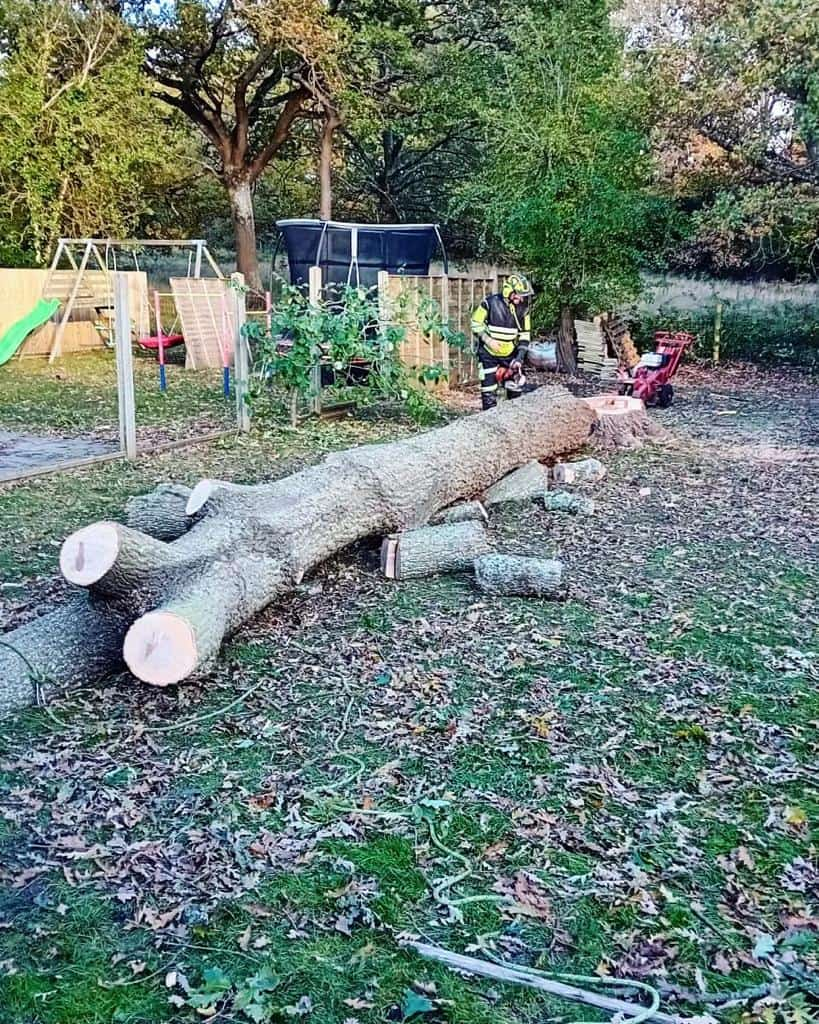Hedges are an important part of any garden, providing structure, privacy, and a touch of natural beauty. But when left unattended, even the hardiest hedges can become overgrown, uneven, or full of dead wood. Restoring them takes more than just trimming the surface — it requires skill, patience, and an understanding of how plants respond to pruning. At Horndean Tree Surgeons, we specialise in bringing neglected hedges back to their best, helping homeowners across Horndean and Hampshire enjoy neat, healthy, and thriving boundaries once again.
Understanding the Condition of an Overgrown Hedge
Before any cutting begins, it’s crucial to assess the hedge’s current condition. Some hedges respond well to renovation pruning, while others may need gradual shaping over multiple seasons. Key things to look for include:
- Dead or diseased branches
- Sparse or thin growth at the base
- Excessive height or width
- Damage caused by weather, pests, or poor previous trimming
A professional inspection helps determine the best approach, ensuring the hedge can recover safely without undue stress.
Step 1: Start with a Careful Trim
The first step in reviving a neglected hedge is a light trim to remove the most overgrown and misshapen parts. This isn’t about cutting everything back at once — doing so can shock the plant and lead to dieback. Instead, gradual shaping allows sunlight to reach the lower sections, encouraging healthy regrowth from the base.
If the hedge has grown excessively tall, a staged height reduction may be needed over several months. This keeps the plant healthy while slowly restoring a manageable shape.
Step 2: Remove Dead or Diseased Wood
Deadwood not only makes hedges look untidy but also attracts pests and fungal infections. Removing damaged or lifeless branches allows the hedge to redirect its energy into new, healthy shoots. At Horndean Tree Surgeons, we use professional pruning tools to make clean, precise cuts that prevent tearing or splintering — key to helping the plant heal quickly.
Step 3: Encourage New Growth
Once the bulk of overgrowth and deadwood has been removed, it’s time to stimulate new, balanced growth. This may involve selective thinning to improve airflow or trimming to shape new shoots in the desired direction.
Healthy regrowth can take a season or two, depending on the hedge species and its age. However, with consistent care and the right pruning technique, most hedges can be restored to full density.
Step 4: Maintain Shape with Regular Pruning
The best way to keep hedges looking sharp is through routine maintenance. Regular trimming — typically two to three times a year — prevents overgrowth and maintains the ideal shape. It also encourages thicker, lusher foliage, improving both the appearance and structure of the hedge.
For formal hedges, cutting the sides slightly narrower at the top ensures even light distribution, keeping the base from thinning out. For natural or informal hedges, a softer, selective trim helps retain a more organic appearance while maintaining control.
Step 5: Address the Root Cause of Neglect
Neglected hedges often suffer due to factors beyond missed pruning. Poor soil, inadequate watering, or insufficient light can all impact growth. A tree surgeon can assess environmental conditions and recommend improvements, such as soil aeration or mulching, to support long-term health.
Why Professional Help Makes a Difference
Restoring an overgrown hedge isn’t simply about cutting it back — it’s about understanding plant biology, seasonal timing, and the correct techniques to promote recovery. The experts at Horndean Tree Surgeons have extensive experience working with all types of hedges, including privet, beech, yew, and conifer varieties.
Our professional approach ensures:
- The right cuts are made at the right time of year
- The hedge remains structurally sound and visually appealing
- Growth is balanced, encouraging a dense, healthy appearance
Conclusion
A neglected hedge doesn’t have to be a lost cause. With the right care and attention, it can be transformed back into a strong, attractive feature that enhances your garden’s look and privacy.
Horndean Tree Surgeons provide expert hedge restoration and maintenance services throughout Horndean and Hampshire, helping homeowners restore structure, shape, and vitality to their landscapes. Whether your hedge needs gentle reshaping or a full rejuvenation plan, our team can ensure it thrives for years to come.
Call us on: 023 8235 7295
Click here to find out more about Horndean Tree Surgeons
Click here to complete our contact form and see how we can help with your tree cares needs.

